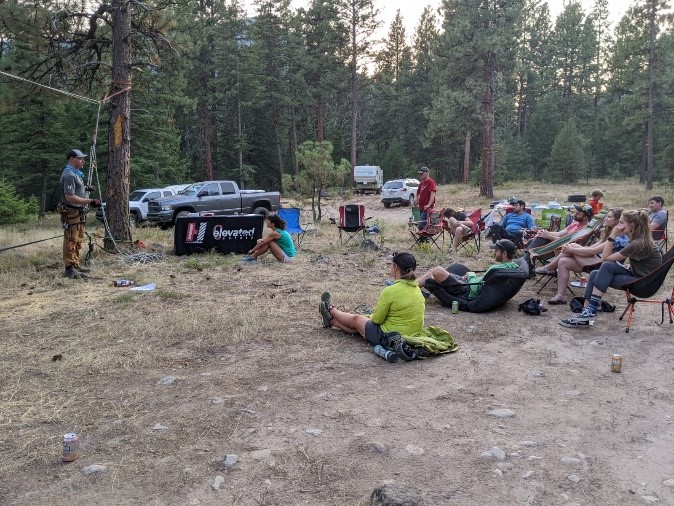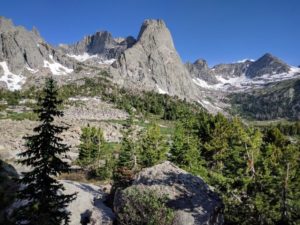
Figure 1: East Face of Pingora, Wind River Range
It was nearing 7:00 PM and we had just climbed a long classic route in the Wind River Range in Wyoming. I was ecstatic having led the whole route and overcoming a difficult alternate pitch midway. My partner was high on endorphins for just completing the longest multi-pitch route of her life. The climb had it all: flaring cracks, route ambiguity, thin face climbing, a lightning and hailstorm, swarms of mosquitos near the base (where we started in snow), high winds, heat, cold, and time constraints. We simul-climbed the final relatively easy pitches to expedite our way to the summit as the early alpine-start approach of post-holing through snow in the dark took longer than expected and the hail storm locked us into an overhang for nearly an hour.

Figure 2: Author’s partner waiting out a lightning/rain/hail storm between pitch 4 and 5
Part of my prep work for this route was not letting my partner know that there was an exit ramp halfway up the route and to forego telling her that many teams do this route in two days – taking that exit ramp to a good bivvy ledge and returning the next morning. “Not us,” I thought. Light and fast was the agenda. My agenda. Under normal circumstances, this is no way to lead a less-experienced partner into a big, consequential alpine climb. However, I feel like I have a pass on this one as she also happened to be (and still is) my wife, and I knew her well enough to feel confident in her fortitude and grit when the need arose. She had been to 21,000 feet with me on a technical peak in the Andes. She had skied technical backcountry cliffs and trees with me most of our life together. She had kayaked with me down technical class IV canyons. Our first date was an impromptu ascent of a semi-technical snow chute on the Olympic Peninsula while my arm was in a sling shortly after a major surgery. She has always been more than capable of overcoming challenges. More importantly, she knows who she married.
The Descent
As the great mountaineer, Ed Viesturs once said, “The summit is just a halfway point.” So atop this supposedly-magical summit, we searched for the appropriate gulley to start the multipitch rappel descent without much more than 100 feet of visibility from the enveloping clouds. Having digital and printed copies of the route and descent, having read and re-read the descriptions and trip reports online, and having talked with some teams that had just come off the summit the day before, I felt like I was prepared for finding my way down. The hard part was finding the start.
For the brevity of this story, I will save you the details of our search for the start of the rappel over the subsequent 90 minutes. Suffice it to say we stubbornly gave up and picked out a bivvy spot below the summit in anticipation of huddling in our ultralight space blanket, putting our legs in our climbing packs for warmth, and eating cold sardines to survive the night. At about the moment when we were ready to submit to the encroaching night, the clouds parted and I was inspired to search one more time for the start of the rappel. After an unnecessarily long downclimb I found some webbing and a couple of anchors.
We committed to the rappel at that very moment. It was dark. We were dehydrated. It was getting colder by the minute. We were low on food. We had been awake for 18 hours – physically exerting ourselves for at least 17 of them (remember the hailstorm).
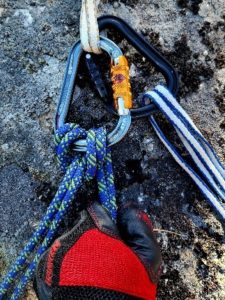
Figure 3: Demonstration of anchors and hitches
Despite having headlamps, we needed to carefully search for every rappel anchor in the dark as we descended to avoid needing to ascend the ropes back up to a missed set of bolts. Most importantly, we had to stay safe and engaged while we navigated this unfamiliar route down the remote rockface.
It worked. We were meticulous about every detail of the descent. Once we were in harnesses hanging on the rope, we knew what we had to do – and we got it done. Although it is normally 3 or 4 rappels, we turned it into 6 because whenever we saw a set of anchors, we set up a new station preventatively. We had no view of the next anchors relative to our rope ends in the dark abyss below so it was safer to avoid the need to ascend back up the ropes. We made it back to camp at 2:45 AM – almost 23 hours after we had left. We drank some tea, took a shot of whiskey, and went to sleep.
It Comes Down To Preparation
This is not an outrageous climbing story. In fact, this is a relatively mellow alpine climbing story overall. The reason I share it is to point out that rock climbing, although inherently adventurous, is often accompanied by an underlying desire for added “spiciness” – especially alpine multipitch climbing. The unpredictability of long routes, limited beta, environmental hazards, and a test of personal grit is part of any alpine climber’s subconscious draw to the vertical world. The differentiator of which side of the line between “high-adventure” and “misadventure” you fall on, though, usually comes down to preparation.
In the situation described above (and many other instances in my climbing career), the knowledge of the party members’ personal skillsets, the understanding of potential hazards, having the appropriate gear on hand in the event of an emergency, and the subsequent confidence from properly preparing and training allowed for the easy decision to descend off the summit in our physical state and in that dark and cold environment. Without proper preparation, we may have slept on that summit with very few layers, no emergency blanket, and no food reserves just hoping to make it to morning to restart our search for a way down or waiting for our friends to call emergency services.
Climbing Self-Rescue Clinic
Recently, I had the pleasure of being approached by our local climbing association, the Western Montana Climbers Coalition to hold a climbing self-rescue introductory clinic. As a longtime climber with almost 20 years of technical rope rescue experience, and as an employee of Elevated Safety and their parent company, Harken, WMTCC was confident in my ability to share some useful knowledge. At the bare minimum, I could help fellow climbers and rescuers in our community be a little more prepared for technical rescue and emergency situations.
The major difference of the world in which I work day-to-day (industrial, urban, and ‘front-country” work at height/rescue) and the recreational climbing world comes down to gear availability. In the industrial sector you might be a 2-minute walk to the specialty rescue gear in the back of the response vehicle. In backcountry rescue and recreational climbing, every gram of weight in your kit is counted before loaded onto your harness or into your backpack.
The self-rescue clinic focused on the bare minimum essentials required to get out of many unwanted backcountry situations.
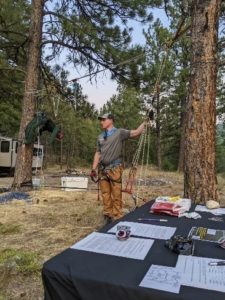
Figure 4: Demonstrating haul systems with varying gear
The goal was to cover:
- Pre-planning
- Equipment options
- Forming and executing a rescue plan
- Review of essential knots and hitches
- Escaping a belay
- Lowering a climber on hitches and auto-locking devices
- Ascending a fixed rope with minimal gear
- Introduction to haul systems and anchor forces
- Tandem rappels
- Damaged ropes and passing knots
With a substantial turnout from many different backgrounds (SAR professionals, novice and advanced climbers, general outdoor enthusiasts, mountaineers), we hit every point above with no time to spare. This was an introduction into the world of self-rescue preparedness. The course was a sampling for the masses to help them find out just how much they may not know. There are tomes written on backcountry safety, self-rescue, and single rope techniques as well as multiday courses abound. Our clinic provided an opportunity for people to be interactive, ask questions, practice advanced hitches, and lay a foundation upon which Elevated Safety can continue to build for recreational self-rescue coursework.
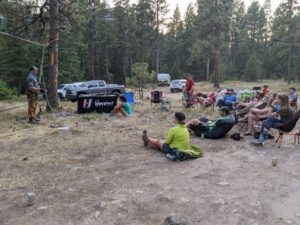
Figure 5: Part of the group attending self-rescue clinic – trees make for easier classrooms than cliffsides in this area
Interestingly, there is more crossover into the professional rope skills than most would initially believe. Many of the pieces of gear that fire departments and SAR teams use stems from adding a convenience factor and an engineered design backed by stringent testing and certification standards. At the core of that gear, though, are similar applications, knots, and techniques that historically come from the realms of climbing, caving, and sailing.
This course allowed us to get back to the fundamental rope rescue skills with minimalist gear and was helpful in reminding me of my climbing roots. With enough interest combined with the exponential growth of recreational climbing and accessibility, the hope is to have more Elevated Safety clinics and courses in the future with varying degrees of skills. In the meantime, stay safe, be prepared for your adventures, and never underestimate the power and joy of gravity.
